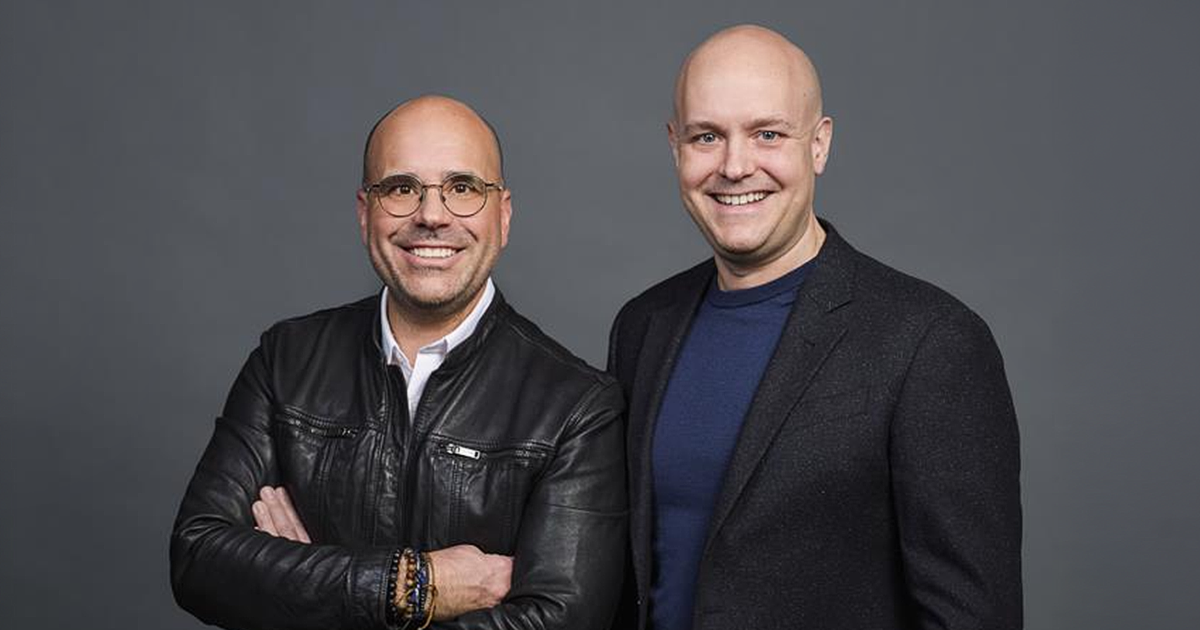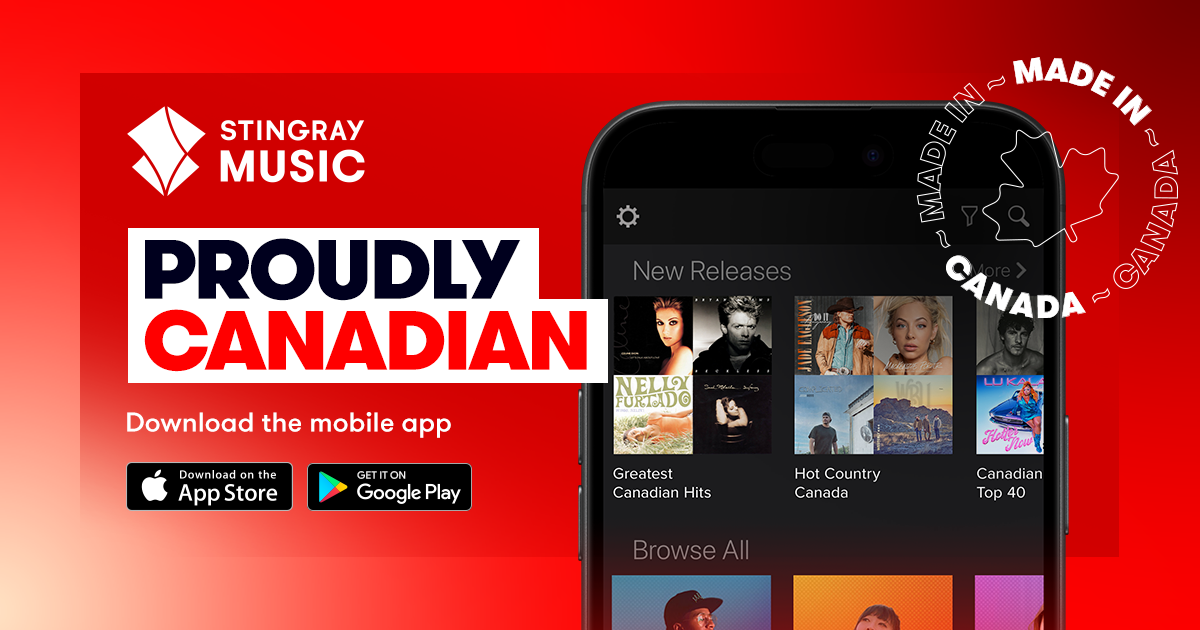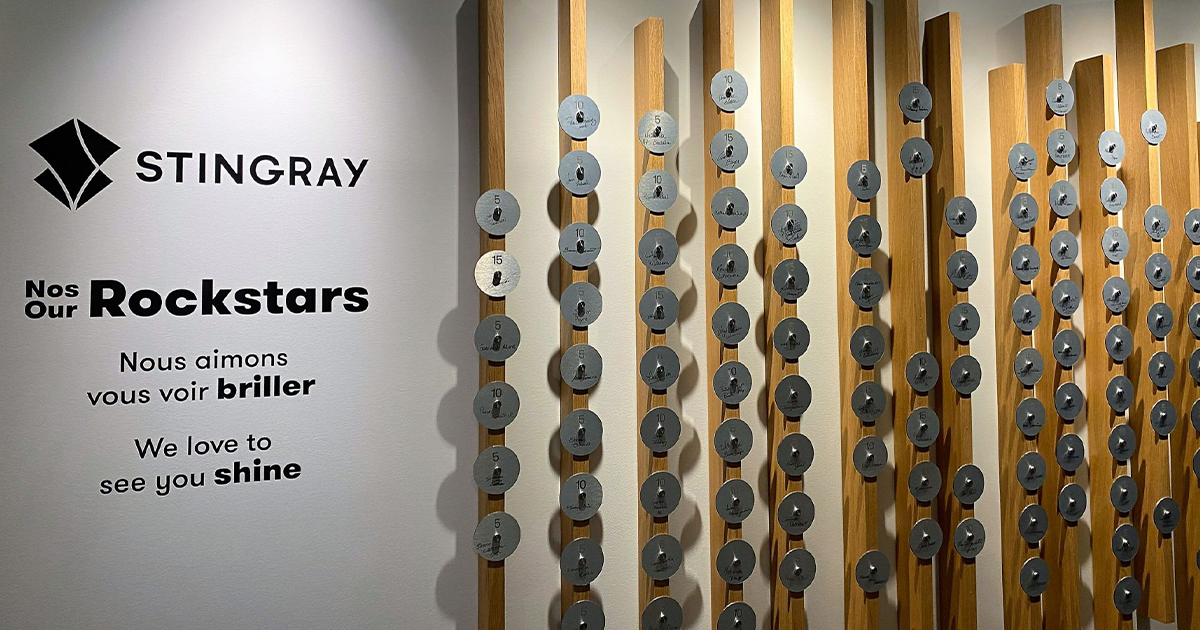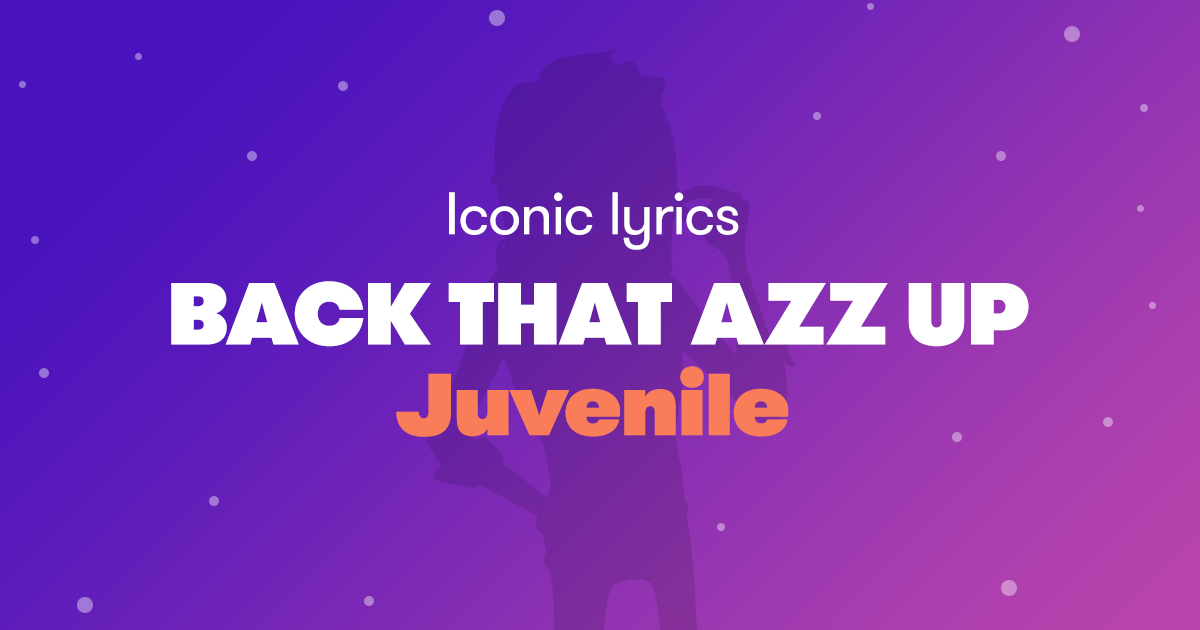
EarthDay365 Presents: Shark Month – See what lies beneath the surface
This month, experience SHARK MONTH on EarthDay365, available on Pluto TV, The Roku Channel, and Amazon Freevee.

In the rapidly evolving landscape of artificial intelligence, some companies are not just adapting—they’re leading the change. Stingray, a global music, media, and technology company, stands at the forefront of this revolution with its strategic approach to AI integration.
We sat down with two of the key players behind Stingray’s AI strategy: Mario Dubois, Chief Technology Officer, and Philippe Côté, Vice-President of Innovation and AI, to discuss how they’re building an AI-powered organization that’s transforming both internal operations and industry standards.
Mario Dubois has been Stingray’s CTO since 2007, bringing his extensive background as an entrepreneur in the IT industry, particularly in gaming and multimedia. With a bachelor’s degree in electrical engineering from the University of Laval, Mario’s journey from founding Teneon Technologies to implementing essential tools and methodologies at major companies like Electronics Arts has equipped him with the perfect blend of technical expertise and visionary leadership.
Philippe Côté leads innovation and artificial intelligence initiatives at Stingray. A founding employee, he has been actively contributing to the company’s technological success since 2007. With over 20 years’ experience in the technology field, he leads specialized teams that ensure Stingray’s leadership position through a culture of constant innovation, particularly in the dynamic context of AI.
“AI has always been present in our culture,” explains Mario Dubois, “but about two years ago, we recognized the infinite possibilities it presented.”
What began with early experimentation quickly accelerated with the release of ChatGPT. “The moment it launched, we immediately saw how it could address use cases we already had in mind,” Mario continues. “We didn’t just see a need—we saw an opportunity.”
Unlike many organizations that approach AI with hesitation, Stingray took a bold step: putting the technology directly into employees’ hands to discover its potential. “We wanted to see how far it could go,” says Philippe Côté. “Rather than limiting AI to theoretical discussions, we invested in our workforce by creating an Innovation AI team with engineers who could take this technology further.”
This approach aligns perfectly with Stingray’s DNA. “We don’t do things the ordinary way,” the CTO emphasizes. “With our strong technological approach and appetite for risk, we saw AI as a natural extension of our optimization efforts— especially as we handle a large number of integrations on a daily basis (50 integrations over the past 18 years!)”
What’s particularly remarkable is the efficiency of their investment. “It didn’t require massive resources,” notes Philippe. “With just three programmers and one manager, we achieved rapid results within a month or two. We’re writing minimal software for maximum impact.”
In the fast-paced world of AI, staying current presents a significant challenge. “There’s simply too much happening to track everything,” admits Mario. “Fortunately, our teams and employees keep us informed.”
The internal buzz around AI at Stingray has created a self-sustaining ecosystem of knowledge sharing. “We’ve generated excitement internally, with about a hundred employees using our AI tools daily. This constant feedback loop keeps us informed about what’s working and what’s next.”
Both leaders emphasize their hands-on approach. “I spend one to two hours daily reading about new developments and testing prototypes,” says Philippe. “Being passionate about the subject makes it easier to stay up to date.”
This practical approach extends to their development philosophy. “We were testing OpenAI before ChatGPT even existed,” Mario recalls. “When GPT-4 was released on March 14, 2023, we tried it that same evening. That’s our approach—hands-on experimentation.”
This philosophy has led to the development of Sonata, Stingray’s internal AI platform. “We built our chatbot out of necessity because nothing suitable existed,” explains Philippe. “ChatGPT wasn’t suited to our needs because it trained on user data.”
What began as a simple Teams-integrated chatbot for experimenting with generative AI quickly evolved into something much more powerful. “Sonata is now a platform for accessing AI services integrated into our company operations,” Mario explains. “It connects to all our code bases, interprets data, provides translation tools, and offers personalized profiles with relevant tools.”
The platform’s key features include image processing, meeting note summarization, code analysis, content translation, and direct connection to company systems. “It’s like having a teammate integrated into your tasks to make you more efficient,” says Philippe. “The effects are exponential.”
This integration has yielded remarkable results: productivity gains across hundreds of employees, thousands of use cases, and concrete projects that deliver measurable returns.
From day one, ethical considerations have been central to Stingray’s AI strategy. “We discussed societal issues at large and within the Stingray community right from the start,” says Philippe. “We wanted to develop quickly so employees could benefit, but we were determined to do it right.”
This commitment to responsible deployment is guided by three key principles that form Stingray’s AI code of conduct:
These principles, inspired by Canadian and European guidelines, ensure that AI augments human capabilities rather than replacing them.
The leaders also acknowledge the ecological impact of AI. “AI requires enormous energy,” Mario notes. “Fortunately, 99% of our AI runs on Microsoft, Google, and Amazon infrastructure, which have made commitments to carbon neutrality and zero emissions in the near future.”
“Early experimentation is crucial,” Mario states emphatically. “When facing a technology where expertise is limited, you can’t just look to others for guidance. To avoid missing the boat, you need to experiment hands-on.”
This philosophy of learning by doing has been transformative for Stingray. “People expect innovation in their companies without ever dedicating time to make it happen,” Philippe observes. “You have to test the limits. Otherwise, you’re just waiting.”
The leaders emphasize that AI implementation doesn’t need to be overwhelming. “Don’t make it a complex, grandiose, or dangerous project,” advises Mario. “Start small with a first step. Do concrete things instead of falling into analysis paralysis.”
This pragmatic approach has yielded extraordinary results for Stingray, demonstrating that with the right mindset, AI can be more accessible and impactful than many organizations realize. “In my entire career as CTO,” Mario concludes, “I’ve never worked so little on a project for so much benefit.”
As AI continues to reshape industries, Stingray’s experience offers valuable insights for organizations at any stage of their AI journey: start early, experiment often, build responsibly, and focus on concrete results. The future belongs to those who are willing to test the limits of what’s possible.

This month, experience SHARK MONTH on EarthDay365, available on Pluto TV, The Roku Channel, and Amazon Freevee.

As Canada Day approaches, we at Stingray are gearing up to celebrate our nation’s vibrant culture and artistic talent. While our reach has become international, our roots remain proudly Canadian. This Canada Day, we’re highlighting our ongoing commitment to supporting Canadian content and artists, providing the perfect soundtrack for your celebrations.

At Stingray, loyalty and retention aren’t just buzzwords; they are the foundation of our thriving community and the secret sauce behind our success.

“Back That Thang Up” is a classic hip-hop track by Juvenile, featuring Mannie Fresh and Lil Wayne. Released in 1999, this song quickly became a staple in clubs and parties, known for its infectious beat and catchy hook. It’s a quintessential example of the bounce music genre that originated in New Orleans.

Christmas is fast approaching and some of you may still be looking for gift ideas for your loved ones. Here is our ultimate gift guide for music lovers!

“Den Pao Pouthena” is a popular Greek song by Vasilis Karras, known for its heartfelt lyrics and emotional depth. The song speaks to themes of love, commitment, and the reluctance to part from a beloved. Vasilis Karras’s soulful voice brings the poignant lyrics to life, making it a favorite among fans of Greek music.